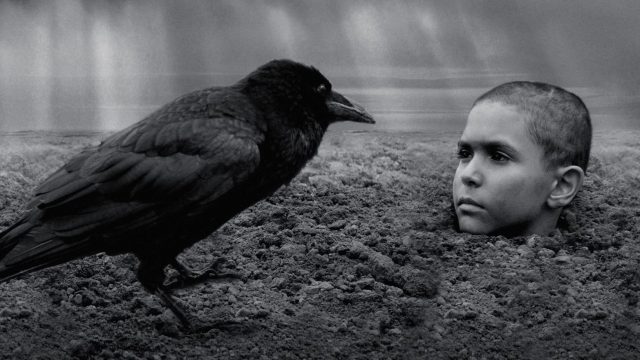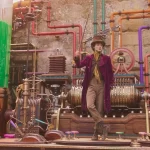CIFF 2019: The Painted Bird, by Jonathan Leithold-Patt

Within the first minutes of Václav Marhoul’s The Painted Bird, an adaptation of a 1965 novel set in a geographically undefined, Boschian hell of an Eastern Europe circa World War II, a young Jewish boy is running through the woods with his pet ferret when he is tackled by a gang of youth. They beat him mercilessly and set the animal ablaze, forcing him to watch its writhing body turn to a crisp. In the next ten or so minutes, the boy’s guardian will die, his home will burn to the ground, and he’ll be shuttled off to a village where superstitious peasants, believing him to be a demon, will tie him up, thrash him, and bury him neck deep in dirt to let ravens peck at his head. This opening salvo, if you can call it that, seems to be designed to announce, in as blunt a way as possible, the film’s intention of rubbing the viewer’s nose in unremitting barbarity. It also summarizes the thesis Marhoul will continue to hammer home for the remaining two-and-a-half-hours: that unconscionable cruelty is not only something humanity is capable of, but something at which it prodigiously excels.
Once it’s established this modus operandi, The Painted Bird proceeds to take on the form of a waking nightmare picaresque, in which the unnamed, mostly nonverbal boy travels from one hideously depraved person to the next, each subjecting him to some form of dehumanizing abuse. Marhoul delineates a vague historical progression in this perverted pilgrim’s journey, taking us from a quasi-medieval village to an industrialized Nazi outpost and the ruins of a postwar Soviet city, but the effect is mostly tautological. Like the donkey in Bresson’s Au Hasard Balthazar, the boy is basically a symbolic beast of burden, a site of corporal punishment indexing the debased humanity through whose hands he passes. There is little variation in his experiences; the degeneracy of each new person he encounters is as predictable and obvious as the intertitles that introduce them. We know they will mete violence upon him, and we know he will silently endure it, springing back up like Teflon for the next round of horrors. Such over-the-top and continuous malice as depicted here, attended by hardly an ounce of irony or redeeming human decency, doesn’t take long to feel silly, even self-parodic, in its severity. By the time Udo Kier is scooping a man’s eyeballs out with a spoon, you might wonder if you’re watching a war drama or a macabre Guy Maddin fantasy.
Despite all this, one would be wrong to think of the The Painted Bird as some kind of historical torture porn, or even as a particularly tortuous viewing experience. On the contrary, Marhoul shows a deftness and restraint in handling the violence, doing far more suggesting than showing. His most affecting scenes, which often occur sans the boy, attain their power through the weight of the history they bear rather than the bloodshed they depict: Jewish prisoners attempting to escape the train carrying them to the camps, a village being plundered by Cossacks. Cannily staged, these sequences invoke the real, yawning terror of the events surrounding the Holocaust without the need for lurid fictional inventions, and they are all the more impactful for it. The rest of The Painted Bird, although certainly a visual ravishment (the 35mm black-and-white is masterful, unsettling for being so simultaneously grimy and luminous), prefers instead to dwell in a generalized state of misanthropy that offers little illumination. If you need a three-hour, proficiently crafted, reasonably compelling reminder that people are awful, make this one a priority.



























